Table of Contents
Mercedes 7G‑DCT (724.0) Dual‑Clutch Transmission – Efficient, Sporty & Reliable
Mercedes’ 7‑speed dual‑clutch transmission (7G‑DCT, Getrag 7DCT300-based) debuted in 2011 on compact models (A/B/CLA/GLA/etc.), offering lightning-fast shifts, excellent fuel economy, and sporty performance
7G‑DCT Specifications & Applications
| Item | Details |
|---|---|
| Model | 7G‑DCT (724.0), Getrag co-developed |
| Gears | 7 forward, dual reverse via clutches |
| Clutch | Wet dual‑clutch system |
| Drive Layout | FWD, optional 4MATIC AWD |
| Torque Rating | 350 Nm standard, up to 475 Nm AMG |
| Oil Spec | MB 236.21, ~7.5 L, change every 60 km |
| Weight | ~86 kg without cooling gear |
| Lifespan | Designed for ~300 k km with proper care |
| Applications | A/B/CLA/GLA/GLB series (2011–present) |
Key Benefits
- – Light, fast-shifting: Performance-focused DCT designed for compact AMG models
- – Efficient & responsive: Combines smooth drivability with fuel economy gains
- – 4MATIC compatible: Integrated AWD tech with power take‑off unit
What is 7G-DCT on a Mercedes?
7G DCT is a 7-speed dual-clutch automatic transmission developed by Mercedes-Benz and featured in several of their compact and mid-size models. Designed to deliver a sporty yet smooth driving experience, this gearbox offers quicker gear changes and better fuel efficiency compared to traditional torque-converter automatics.
7G DCT Mercedes operates using two separate clutches that work in tandem to preselect gears, allowing for seamless transitions with no loss in power. This technology ensures faster shifts, improved acceleration, and a more dynamic response, especially during sporty driving or stop-and-go traffic conditions.

Which Mercedes has DCT?
The 7 speed dual clutch transmission is commonly found in a range of Mercedes-Benz models, particularly in compact and mid-size vehicles. Some popular models equipped with this transmission include:
B-Class (W246)
These models benefit from the 7G-DCT’s efficiency and performance-oriented characteristics, making them suitable for both city driving and highway cruising.
What is a DCT Transmission?
A Dual Clutch Transmission (DCT) is a type of automated manual transmission that uses two separate clutches for odd and even gear sets. This design allows for faster gear changes and better fuel efficiency compared to traditional automatics.
In a DCT, one clutch controls the odd gears (1, 3, 5, 7) while the other controls the even gears (2, 4, 6), enabling almost instantaneous shifts.

7 speed dual clutch transmission
7 speed dual clutch transmission is a key innovation in Mercedes-Benz engineering, offering a balance between performance and efficiency. Known as the 7G-DCT, this transmission uses two separate clutches to pre-select gears, allowing for lightning-fast shifts with minimal interruption in power.
It provides the feel of a sporty manual with the convenience of an automatic, making it an ideal choice for drivers who value both smoothness and responsiveness.
7 speed dual clutch transmission is especially effective in vehicles with smaller engines, where efficient power delivery is essential. By reducing shift times and optimizing fuel

7g dct Mercedes Reliability
The 7g dct Mercedes transmission is generally considered reliable, but like any advanced automotive technology, its long-term durability depends on proper maintenance and driving habits. Here are key points regarding the reliability of this gearbox:
General Reliability
- – Build Quality: The 7G-DCT is well-engineered and built to handle the demands of everyday driving, offering smooth and quick shifts that enhance both performance and fuel efficiency.
- – Common Usage: It’s widely used in many of Mercedes’ compact and mid-sized models, reflecting the brand’s confidence in its reliability for a broad range of vehicles.
Mercedes 7 speed auto gearbox problems & Maintenance
| Issue | Symptoms | Fix & Maintenance Recommendations |
|---|---|---|
| Shift jerk or hesitation | Harsh downshifts or lag | Update TCU firmware, monitor fluid condition |
| Mechatronics wear (solenoids) | Erratic shifting, error codes | Replace valve-bodys, flush fluid regularly |
| Oil pump or cold shifting issues | Cold or rough operation | Ensure electric oil pump working; warm gear oil before heavy driving |
| Fluid neglect | Premature wear, clutch slippage | Full fluid + filter change every 60 k km |
Learn about How to change and Check the transmission Oil in the following links below;
How To Check Automatic Transmission Oil : Clear Steps
7DCT300 Oil Change: DIY, Save Your Money
Transmission slip into neutral while driving
DIY vs Professional Service
| Task | DIY-Friendly | Professional Recommended |
|---|---|---|
| Fluid & filter change | Yes | — |
| TCU/firmware updates | Tool needed | Dealer / specialist |
| Valve‑body/solenoid replacement | No | Specialist essential |
| Electric oil pump testing | Moderate | Specialist |
| Mechatronics rebuild | No | Mercedes-approved shop |
Overall Reliability
- – Longevity: With proper care, the 7G-DCT can provide many years of reliable service. It’s designed to be durable, but as with any high-performance transmission, it requires attentive maintenance.
- – User Experience: Most drivers report a positive experience with the 7G-DCT, particularly appreciating the quick shifts and improved fuel economy. However, those unaccustomed to dual-clutch transmissions may notice a different feel compared to traditional automatics.
Comparison with Other Transmissions
When compared to other types of transmissions, such as the 7G-Tronic (a traditional torque converter automatic), the 7G-DCT may require more attentive maintenance but offers better performance and efficiency.
In general, it’s a good choice for drivers seeking a more dynamic and responsive driving experience, as long as they are prepared to follow the recommended maintenance schedule.

In conclusion, the Mercedes 7G-DCT transmission is a reliable and well-engineered system, but it does require regular maintenance and a bit of adaptation from drivers, especially those new to dual-clutch systems.
Dual Clutch Transmission Mercedes
A Dual Clutch Transmission (DCT) in Mercedes-Benz vehicles, commonly referred to as the 7G-DCT, is an advanced type of automated transmission that uses two separate clutches for even and odd gear sets.
Unlike traditional automatic transmissions, which use a single torque converter, the DCT design allows for faster and smoother gear shifts by pre-selecting the next gear while the current gear is still engaged.

How the Dual Clutch Transmission Works
- – Two Clutches: The dual-clutch system utilizes one clutch for the odd gears (1, 3, 5, 7) and another for the even gears (2, 4, 6). As a result, when the vehicle shifts from one gear to the next, there’s no interruption in power delivery, as one clutch disengages while the other engages.
- – Gear Preselection: This preselection process allows for nearly instantaneous gear changes, contributing to both improved performance and fuel efficiency.
- – Smooth Operation: The design minimizes the lag and jerkiness often associated with gear shifts in traditional automatics, offering a more refined driving experience.
Advantages of Mercedes DCT
- – Quick Shifts: The ability to change gears almost instantaneously enhances acceleration and responsiveness, making the DCT ideal for sporty driving.
- – Fuel Efficiency: The DCT’s efficiency, due to reduced power loss during shifts, helps improve fuel economy.
- – Performance: The transmission’s design caters to drivers who seek a more engaging and dynamic driving experience without sacrificing comfort.
Considerations
While the DCT offers many benefits, it may feel different from traditional automatics, especially at lower speeds where some drivers might notice slight hesitations or jerky movements. However, these characteristics are generally minor and can be mitigated with adaptive driving habits.
In summary, Mercedes-Benz’s Dual Clutch Transmission is a sophisticated technology that enhances driving performance while offering a smooth and efficient ride, particularly suited to the brand’s compact and sporty models.
Is 7g dct Mercedes Good?
Yes, the 7-speed DCT, particularly in Mercedes vehicles, is considered a good transmission choice for those looking for a balance between performance and efficiency. It offers quick shifts, improved fuel economy, and a responsive driving experience. However, it may take some getting used to, especially for drivers accustomed to traditional automatics.
Is the Mercedes 7G-DCT Wet or Dry?
The Mercedes 7G-DCT is a dual-clutch transmission (DCT) that was first introduced in 2012 for compact models like the A-Class, CLA, and GLA. One of the key aspects that enthusiasts and owners often inquire about is whether the 7G-DCT uses a wet or dry clutch system.
Wet or Dry Clutch – Which One?
The Mercedes dual clutch transmission is a wet-clutch system. This means that the clutch plates are bathed in transmission fluid, which provides several benefits:
- – Better cooling: The fluid helps dissipate heat, especially under heavy loads or high temperatures.
- – Higher durability: Wet clutches typically last longer than dry clutches due to reduced friction and overheating risks.
- – Smoother performance: Wet clutches allow for smoother gear changes, making the driving experience more comfortable.
Why Does Mercedes Use a Wet Clutch in the 7G-DCT?
Mercedes chose a wet clutch design to improve the transmission’s performance and reliability, especially in their luxury and performance-oriented compact cars. Wet clutches are better suited for handling higher torque loads, which aligns with Mercedes’ focus on providing both comfort and performance.
Frequently Asked Questions
Is the 7G-DCT reliable?
Yes, solid for performance-oriented compacts. Regular fluid and filter changes every 60k km are critical.
Can I do the fluid service myself?
Yes, competent DIYers can handle oil and filter changes, but valve-body work requires professional tools.
What if I feel shift jerks?
First update TCU software, then check fluid/filter. Persistent issues may require mechatronics rebuild.
Does the 7G-DCT need special oil?
Yes, MB 236.21 spec only, 7.5 L capacity. Using the correct oil prevents clutch and solenoid damage.

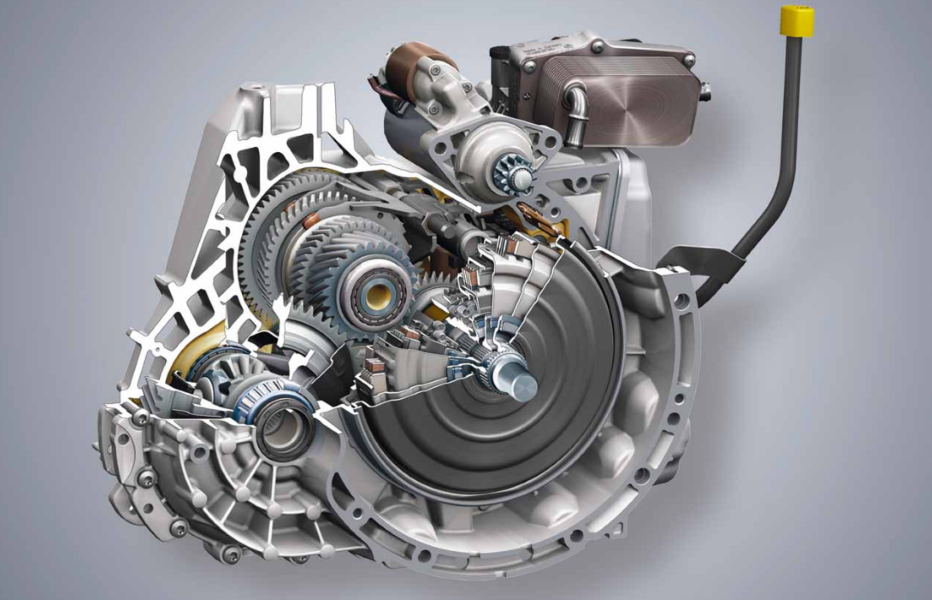

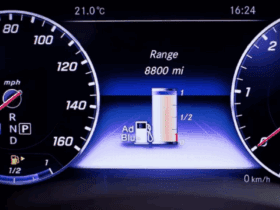
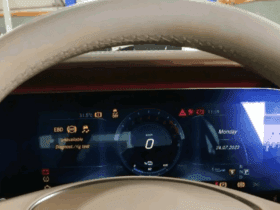

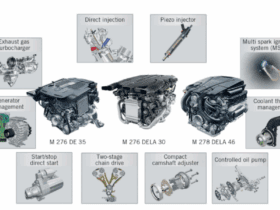
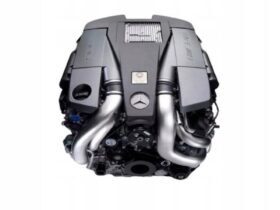
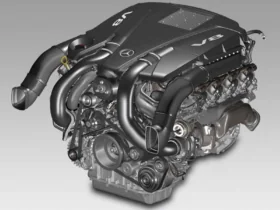
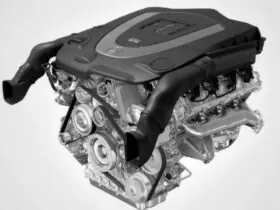
Leave a Reply